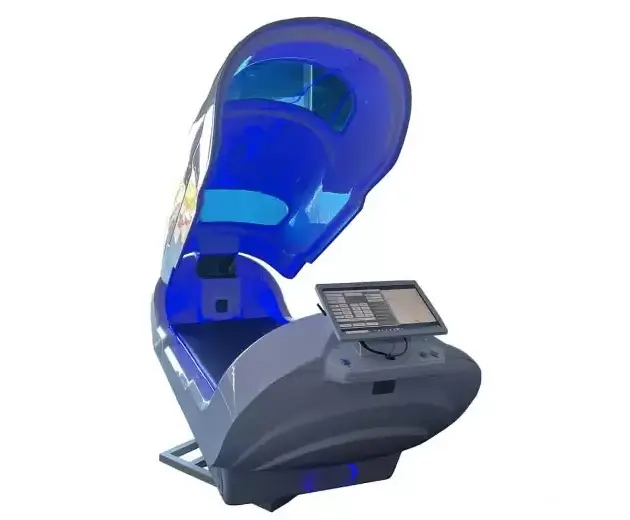Discover the reasons why mild-hyperbaric oxygen therapy is effective by exploring the science behind it. Understand how increased pressure and oxygen saturation can promote healing and wellness at Innovative Wellness Consultants.
Mild-Hyperbaric Oxygen Therapy (M-HBOT) has gained recognition for its potential to promote healing and enhance wellness. This specialized therapy includes inhaling pure oxygen in a pressurized setting, which can significantly impact the body’s capacity to heal and rejuvenate. At Innovative Wellness Consultants, we are dedicated to exploring the science behind M-HBOT and its health benefits. In this blog, we will delve into the mechanics of M-HBOT, the physiological responses it triggers, and its wide-ranging therapeutic applications.
What is Mild-Hyperbaric Oxygen Therapy (M-HBOT)?
Mild-Hyperbaric Oxygen Therapy (M-HBOT) entails breathing purified air or oxygen within a chamber where the pressure is just above normal atmospheric levels. Unlike traditional HBOT that uses significantly higher pressures, M-HBOT employs a more moderate pressure, typically peaking at 1.3 ATA, which makes it suitable for a wider range of people.
The main objective of M-HBOT is to enhance the levels of oxygen in body tissues. As the chamber’s pressure increases, the way oxygen is absorbed and transported by the blood changes, leading to higher oxygen concentration in the bloodstream. This increase in oxygenation significantly benefits cellular function, aiding in healing and enhancing various bodily processes.
The elevated dissolved oxygen levels in the plasma improves its diffusion into tissues, including those with compromised or restricted blood flow. This process ensures that even areas with reduced circulation receive adequate oxygen to support healing and cellular function.
Oxygen is crucial for cellular metabolism and energy production. By increasing oxygen availability, M-HBOT enhances the efficiency of cellular processes, promotes the production of adenosine triphosphate (ATP), and supports the function of mitochondria, the cell’s energy powerhouses.
Physiological Responses to M-HBOT
The heightened oxygen levels achieved through M-HBOT trigger different physiological responses that contribute to its therapeutic effects. Here are the benefits of mild-hyperbaric oxygen therapy.
- Angiogenesis
M-HBOT stimulates angiogenesis or the formation of new blood vessels. Increased oxygen levels improve the release of growth factors and other signaling molecules that encourage the growth of new capillaries. This process enhances blood flow to damaged tissues, supporting their repair and regeneration.
- Reduction of Inflammation
Chronic inflammation is among the most underlying factors in various health conditions. M-HBOT has been shown to reduce inflammation by inhibiting the activity of pro-inflammatory cytokines and promoting the production of anti-inflammatory molecules. This reduction in inflammation can alleviate pain and support the healing process.
- Collagen Production
Collagen is a crucial connective tissue component that has an important role in wound healing. M-HBOT stimulates fibroblasts, the cells responsible for collagen production, thereby accelerating the repair of damaged tissues and improving skin health.
- Enhanced Immune Function
The immune system relies on oxygen to function effectively. M-HBOT helps the body fight infections more effectively by boosting the bacteria-killing ability of white blood cells. The therapy also promotes the removal of toxins and waste products from the tissues, further supporting immune function.
- Neuroprotection and Neurogenesis
Recent studies have shown that M-HBOT can have neuroprotective effects, particularly in conditions involving brain injury or neurodegeneration. The increased oxygen levels can reduce brain inflammation, promote the survival of neurons, and stimulate neurogenesis, the formation of new neural connections. This makes M-HBOT a promising treatment for traumatic brain injury (TBI), stroke, and other neurological conditions.
Therapeutic Applications of M-HBOT
Given its wide-ranging physiological effects, M-HBOT is used to treat a variety of medical conditions and enhance overall wellness. Here are some of its key therapeutic applications.
- Chronic Wound Healing
M-HBOT is highly effective in treating chronic, non-healing wounds like pressure sores and diabetic foot ulcers. The therapy enhances oxygen delivery to the wound site, promotes angiogenesis, reduces inflammation, and supports the immune response, all of which accelerate the healing process.
- Infection Control
M-HBOT is used as an adjunct therapy for certain types of infections, particularly those caused by anaerobic bacteria that thrive in low-oxygen environments. Increased oxygen levels prevent the growth of these bacteria and improve the effectiveness of antibiotics, making M-HBOT a crucial tool in the management of serious infections.
- Sports Injuries
Athletes often use M-HBOT to speed up recovery from sports-related injuries. The therapy reduces inflammation and swelling, promotes tissue repair, and helps manage pain, allowing athletes to return to their training and competition more quickly.
- Post-Surgical Recovery
M-HBOT can improve post-surgical recovery by enhancing tissue repair, reducing the risk of infection, and minimizing inflammation. Patients undergoing major surgeries can benefit from faster healing times and reduced complications with the help of M-HBOT.
- Anti-Aging and Skin Health
M-HBOT’s anti-aging benefits are attributed to its ability to reduce oxidative stress, boost collagen production, and enhance overall skin health. The therapy can improve skin elasticity, reduce wrinkles, and promote a more youthful appearance.
- Neurological Conditions
M-HBOT offers promising benefits for patients with neurological conditions such as TBI, stroke, or cerebral palsy. The therapy’s neuroprotective and neurogenic effects can support brain healing, improve cognitive function, and enhance overall neurological health.
- Radiation Therapy Side Effects
Radiation therapy for cancer may come with long-term tissue damage and side effects that develop months or even years later. Mild-hyperbaric oxygen therapy can combat these side effects by supercharging damaged tissues with oxygen-rich blood, accelerating healing, and easing pain and discomfort.
Conclusion
By boosting oxygen levels in the body, M-HBOT promotes healing and overall wellness. By understanding the science behind M-HBOT and its physiological effects, we can appreciate its potential to support a wide range of health conditions. If you are interested in exploring the benefits of M-HBOT, visit us to schedule a consultation today.






